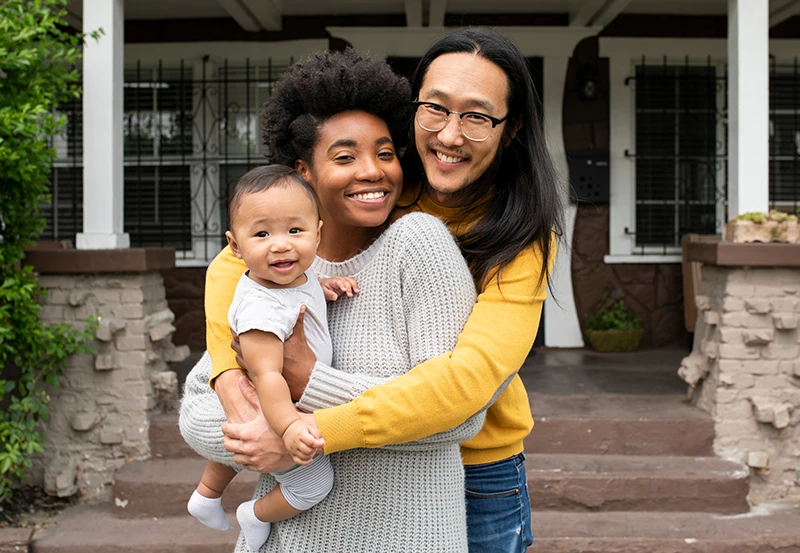Search
Affordable Housing in Crisis: How California Voters Can Shape the Future This Fall
October 22, 2024

By Kelly Batson
California’s housing crisis isn’t just a headline – it’s a daily reality reshaping our communities and destroying the lives of thousands of our neighbors — mostly seniors and people of color. With affordable housing and homelessness dominating public discourse, court dockets, and kitchen table conversations, voters in Sacramento and across California will have a pivotal opportunity this fall to impact the future of housing affordability.
The problem is a classic issue of supply and demand. California’s growing economy has outpaced the housing needed for that growing workforce for decades. According to the U.S. Bureau of Labor Statistics, California added a total of 2,428,930 jobs between 2010 and 2020. During the same period, 957,215 new housing units were authorized by building permits, based on the U.S. Census Bureau’s Building Permits Survey. But the solution is not as simple as “just build” to create supply; we must ensure the homes being built are affordable for everyone in the workforce and each person who calls the Bay Area home.
Thus far, we’ve built plenty of luxury and upper-tier homes. But adding supply at the top of the market does not trickle down; nothing ever does. This leaves working people behind – people like Jamie Kearns, a middle school math teacher in Vallejo, who ended up homeless, despite her and her husband working and trying to make ends meet.
Jamie’s story highlights the issue: we’re building homes, but not nearly enough of the right kind. The Bay Area has built about 50% of the affordable housing we desperately need, while simultaneously overbuilding above moderate-income housing by 200%. This imbalance is the driving force behind our region’s affordability crisis and the alarming rise in homelessness. Two families become homeless for every family we move off the streets.
Our current voter threshold, requiring two-thirds of the vote to approve affordable housing and infrastructure funding bonds, is unjust. Currently, 34% of voters or a well-funded opponent can shoot down a bond that 64% of voters approved. That means defeat for affordable housing bond measures that have overwhelming support. Measure A in San Diego in 2020 was a $900 million bond to boost affordable housing for the most vulnerable amongst us. It failed even though 57% of voters supported it. Measure L in the City of Berkeley in 2022 was a $650 million bond to fund housing and infrastructure that failed with 59% of voters supporting it. Minorities of voters are sidelining initiatives that the majority of people approve.
Voters have an opportunity this fall to reclaim power over our housing future by supporting Proposition 5. This measure would change the voter threshold for approving local housing bonds that finance the construction of affordable housing, from a two-thirds supermajority to 55 percent, keeping voter control in local housing decisions while making it easier to increase affordable housing supply in the communities that need it most.
We know that local housing bonds work. For example, Santa Clara County, which struggles mightily with homelessness and its own housing shortage, is finally on track to create 4,481 new apartments, thanks to a $950 million bond approved nearly a decade ago, that will provide safe and stable homes for thousands of residents. The bond’s impact extends beyond just building and renovating units. It has also allocated $25 million for first-time homebuyers, helping to bridge the gap between renting and owning for many middle-income families, showcasing how well-designed housing bonds can address various aspects of the affordability crisis.
Imagine Sacramento County, and other counties in our region, each with their own diverse communities and housing needs, had their own local bonds similar to Measure A. The success of Proposition 5 has the potential to make this a reality.
Housing advocates, labor organizations, the business community, and faith groups agree: building at all levels of market demand will get us out of this housing shortage. We cannot criminalize our way out of homelessness or demonize neighbors who are struggling to keep their families housed. In addition to quickly increasing the supply of affordable housing, we need to implement stronger tenant protections, expand additional supportive and interim housing options, and advocate for every solution that benefits neighbors struggling to keep a roof over their heads.
This November’s election will be a watershed moment for housing affordability in the Bay Area and across the state. California’s strength has always been its diversity – of people, ideas, and opportunities. But that strength is at risk if we don’t act now to ensure everyone who makes the Golden State so beautiful can afford to call this region home. Let’s seize this moment, invest in our communities, and build a Bay Area where everyone has a place to call home.


